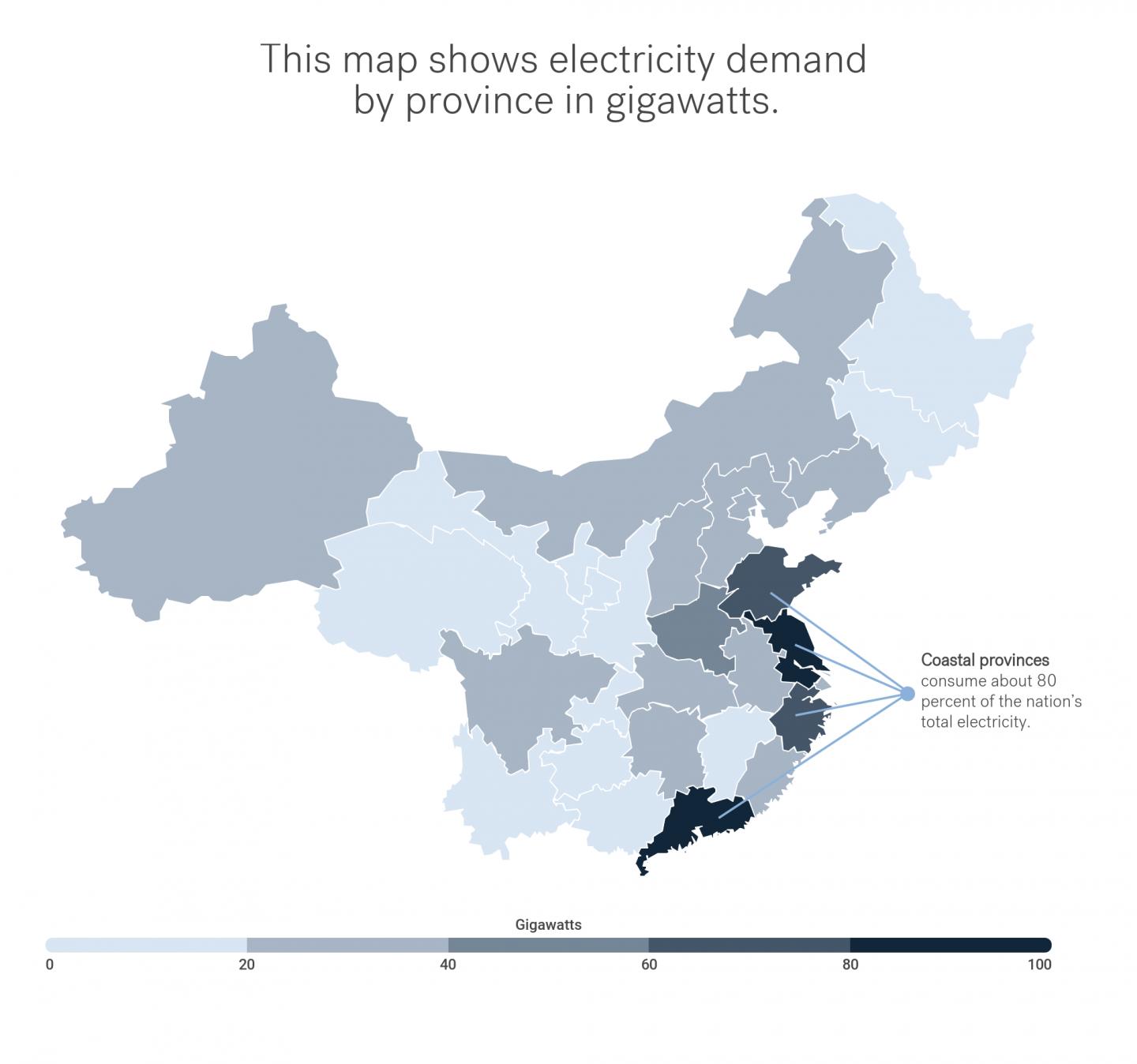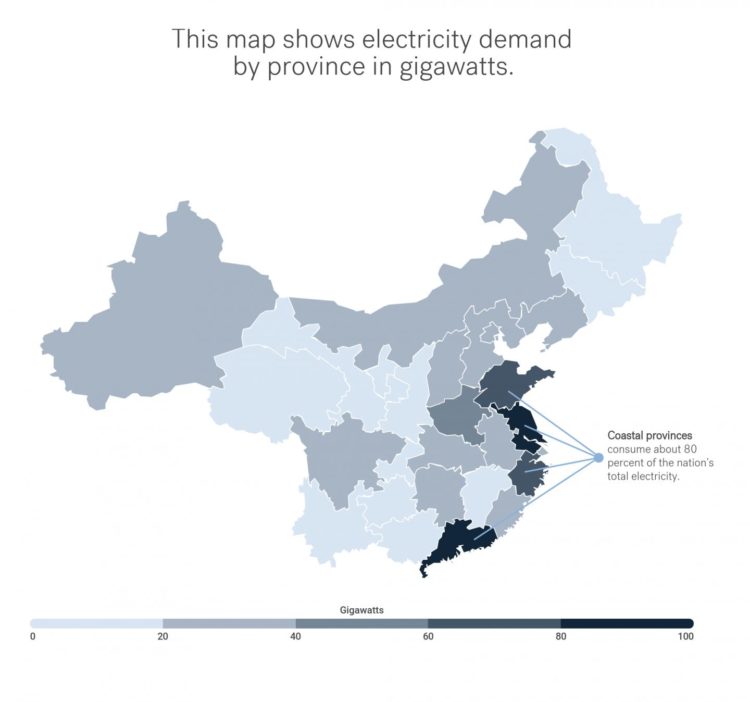Offshore wind farms could power much of coastal China

Credit: Harvard SEAS
Under the Paris Climate Agreement, China committed to rely on renewable resources for 20 percent of its energy needs by 2030. Currently, the country is on track to double that commitment, aiming to hit 40 percent by the next decade. Wind power is critical to achieving that goal. Over the past 20 years, China’s wind power capacity has exploded from 0.3 gigawatts to 161 gigawatts.
But, in recent years, that growth has slowed and the hopes for China’s wind-powered future have dampened.
Why? Location, location, location.
Populous coastal provinces, including Guangdong and Jiangsu, consume about 80 percent of the nation’s total electricity but the vast majority of China’s wind capacity comes from land-based wind farms in places like Inner Mongolia, more than a thousand miles away from most major cities.
To make matters worse, recent climate studies have suggested that the weakening land-sea temperature gradient due to global climate change is making historically windy regions, like Inner Mongolia, less windy.
In addition, much of the wind power from those regions isn’t being used because of when it’s produced. Research has suggested that some 16 percent of total potential wind generation was wasted between 2010 and 2016, costing more $1.2 billion.
If China is to meet and exceed its Paris goal by 2030, it’s going to need to find a way to increase its wind capacity.
In a recent study, researchers from the Harvard John A. Paulson School of Engineering and Applied Sciences (SEAS) and Huazhong University of Science and Technology in China, found that offshore wind could be a big part of the solution.
The research is published in Science Advances.
“This is an important new contribution, recognition that China has abundant off-shore wind potential that can be developed and brought on shore to the power hungry coastal provinces at costs competitive with existing coal-fired polluting power plants,” said Michael McElroy, the Gilbert Butler Professor of Environmental Studies at SEAS and senior author of the paper.
To calculate the capacity and cost of offshore wind in China, the researchers first identified the regions where offshore wind farms could be built, excluding shipping zones, environmentally protected areas and water depths higher than 60 meters. They calculated the wind speeds in those areas and estimated the hourly capacity for each of the turbines.
They found that the total potential wind power from wind farms built along the Chinese coast is 5.4 times larger than the current coastal demand for power.
The researchers also found that this power would be cost-efficient.
“We estimate offshore wind costs according to a range of values derived from recent offshore wind farm developments,” said Peter Sherman, a graduate student at the department of Earth and Planetary Science and first author of the paper. “Offshore wind turbines have historically been prohibitively expensive, but it is clear now that, because of significant technological advances, the economics have changed such that offshore wind could be cost-competitive now with coal and nuclear power in China.”
The researchers estimated that if electricity prices are high, offshore wind could provide more than 1,000 terawatt-hours, or about 36 percent of all coastal energy demand. If electricity prices are low, it could provide more than 6,000 terawatt-hours, or 200 percent of total energy demand.
“Our research demonstrates the potential for cost-effective, offshore wind to power coastal regions, reduce greenhouse gas emissions and improve air quality in China,” said McElroy.
###
Media Contact
Leah Burrows
[email protected]
617-496-1351





